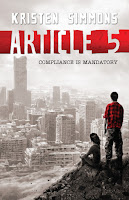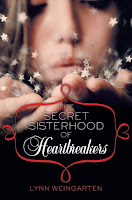Last week, I wrote a
post about bringing in action when describing your characters so it doesn’t sound
like a laundry list. Today, I want to talk about describing other things.
Object description is even
more likely to sound like a laundry list because objects don’t move. If it
doesn’t move, how can the description seem active? Well, there are plenty of
options.
One way is to use
active verbs in the description, giving the object its own personality. The
curve of a statue could be sweeping. A pendant could be shaped like a tear
drop, heavy and drooping. A rug could be bright and bold, and a table could be
crisp and shiny.
Of course, even if you
use active verbs like these, your description will still sound like a laundry
list unless you add a key element: your characters. After all, who perceives these
objects? They do! Show us the object through them—how they perceive it, what
feelings they evoke, how they interact with them, et—and it will be much easier
to introduce action. Especially since people can actually do things while objects
pretty much just sit there.
Really, though, it all depends on what's going on in the story, and how important that object is. If it's just an illustration of something already established, then there's not much needed. For example:
She arranged the stack of magazines on the polished table.
Here, the table is just adding to the character, how she wants everything 'just so.' The table doesn't mean anything to her, except to look nice. In fact, she probably doesn't even think about it being there.
But if an object means something to a character, then she will notice far more details. For example:
The pendant dangled from its gold chain, a tear-drop-shaped piece of carved stone. The swooping scroll design faded into the pocked and worn surface. I turned it over. It was heavier than I expected, and...warm. The way stone feels when it’s been sitting in the sun for a long time. My fingers kind of tingled, too.
Here, the character is interacting with this pendant and, at the same time, forming a connection to it. So, she notices far more details about it. And, the more active your verbs are, the more vivid your description will be, the more you will engage your reader.
Really, though, it all depends on what's going on in the story, and how important that object is. If it's just an illustration of something already established, then there's not much needed. For example:
She arranged the stack of magazines on the polished table.
Here, the table is just adding to the character, how she wants everything 'just so.' The table doesn't mean anything to her, except to look nice. In fact, she probably doesn't even think about it being there.
But if an object means something to a character, then she will notice far more details. For example:
The pendant dangled from its gold chain, a tear-drop-shaped piece of carved stone. The swooping scroll design faded into the pocked and worn surface. I turned it over. It was heavier than I expected, and...warm. The way stone feels when it’s been sitting in the sun for a long time. My fingers kind of tingled, too.
Here, the character is interacting with this pendant and, at the same time, forming a connection to it. So, she notices far more details about it. And, the more active your verbs are, the more vivid your description will be, the more you will engage your reader.
Challenge:
Take an inanimate
object from your childhood (or some other time in your life) and describe it
using active verbs. The object can’t move by itself, and you’re not allowed to
interact with it to make it move. Instead, focus on the kinds of verbs you use
to describe it, as well as the emotions it evokes in you.
Feel free to share your
work here in the comments, or keep it to yourself. Your choice.
Next week, I want to get into the nitty gritty of describing setting. I think setting should be treated as another character, but we’ll get more into that next week. :)
Next week, I want to get into the nitty gritty of describing setting. I think setting should be treated as another character, but we’ll get more into that next week. :)










